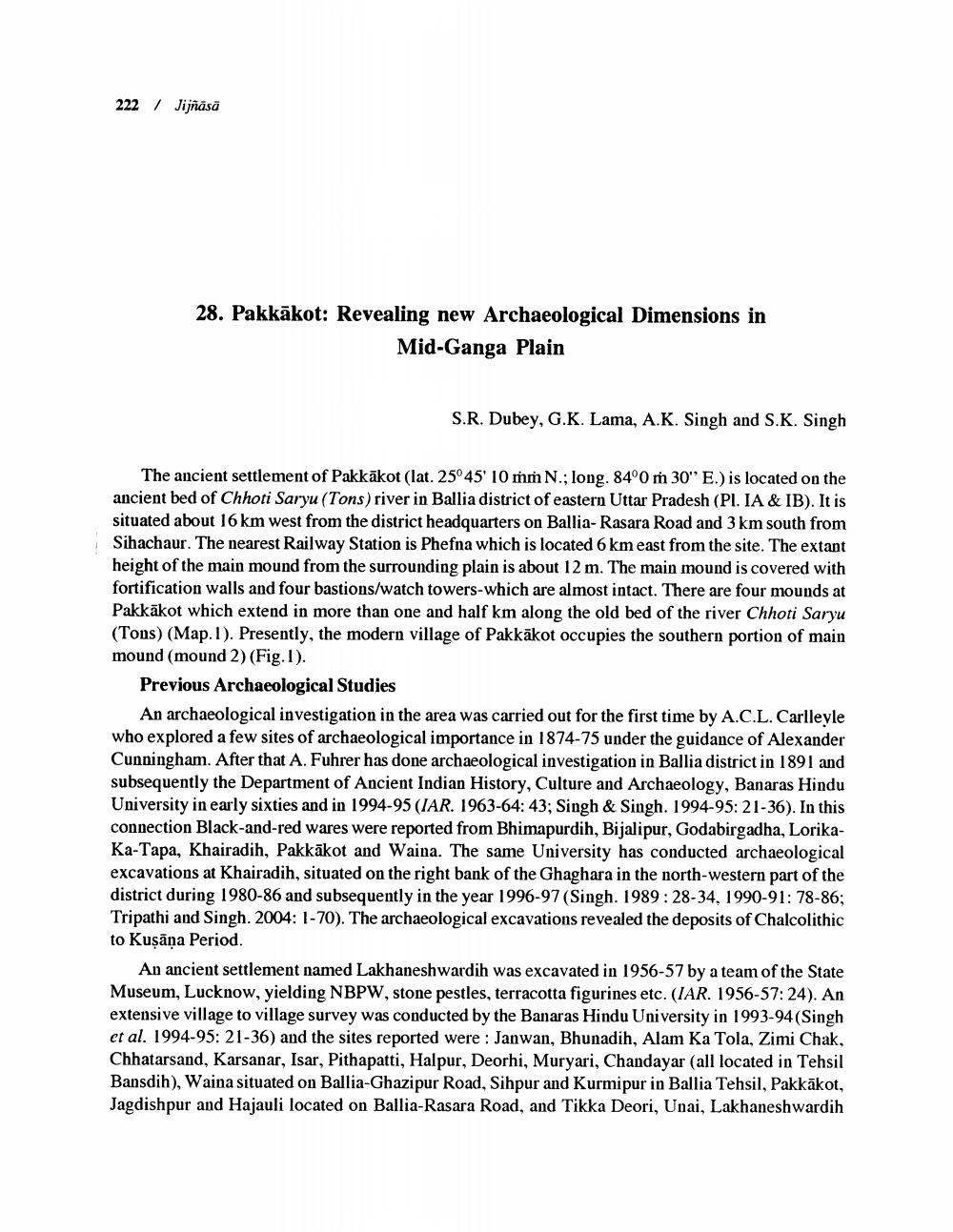________________
222 /
Jijñāsä
28. Pakkākot: Revealing new Archaeological Dimensions in
Mid-Ganga Plain
S.R. Dubey, G.K. Lama, A.K. Singh and S.K. Singh
The ancient settlement of Pakkākot (lat. 25°45' 10 mm N.; long. 84°0 m 30" E.) is located on the ancient bed of Chhoti Saryu (Tons) river in Ballia district of eastern Uttar Pradesh (PI. IA & IB). It is situated about 16 km west from the district headquarters on Ballia- Rasara Road and 3 km south from Sihachaur. The nearest Railway Station is Phefna which is located 6 km east from the site. The extant height of the main mound from the surrounding plain is about 12 m. The main mound is covered with fortification walls and four bastions/watch towers-which are almost intact. There are four mounds at Pakkākot which extend in more than one and half km along the old bed of the river Chhoti Saryu (Tons) (Map.1). Presently, the modern village of Pakkākot occupies the southern portion of main mound (mound 2) (Fig. 1).
Previous Archaeological Studies
An archaeological investigation in the area was carried out for the first time by A.C.L. Carlleyle who explored a few sites of archaeological importance in 1874-75 under the guidance of Alexander Cunningham. After that A. Fuhrer has done archaeological investigation in Ballia district in 1891 and subsequently the Department of Ancient Indian History, Culture and Archaeology, Banaras Hindu University in early sixties and in 1994-95 (IAR. 1963-64: 43; Singh & Singh. 1994-95: 21-36). In this connection Black-and-red wares were reported from Bhimapurdih, Bijalipur, Godabirgadha, LorikaKa-Tapa, Khairadih, Pakkākot and Waina. The same University has conducted archaeological excavations at Khairadih, situated on the right bank of the Ghaghara in the north-western part of the district during 1980-86 and subsequently in the year 1996-97 (Singh. 1989: 28-34. 1990-91: 78-86; Tripathi and Singh. 2004: 1-70). The archaeological excavations revealed the deposits of Chalcolithic to Kuşāņa Period
An ancient settlement named Lakhaneshwardih was excavated in 1956-57 by a team of the State Museum, Lucknow, yielding NBPW, stone pestles, terracotta figurines etc. (IAR. 1956-57: 24). An extensive village to village survey was conducted by the Banaras Hindu University in 1993-94 (Singh et al. 1994-95: 21-36) and the sites reported were : Janwan, Bhunadih, Alam Ka Tola, Zimi Chak, Chhatarsand, Karsanar, Isar, Pithapatti, Halpur, Deorhi, Muryari, Chandayar (all located in Tehsil Bansdih), Waina situated on Ballia-Ghazipur Road, Sihpur and Kurmipur in Ballia Tehsil, Pakkākot, Jagdishpur and Hajauli located on Ballia-Rasara Road, and Tikka Deori, Unai, Lakhaneshwardih




